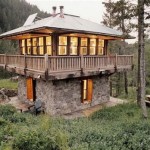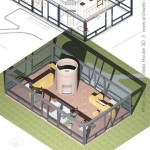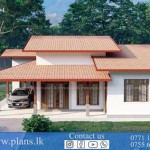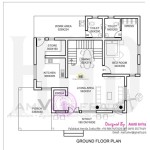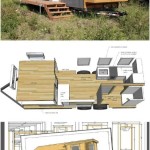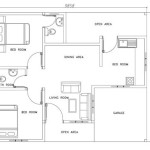6 Bedroom 3 Bathroom House Plans: Maximizing Space and Functionality
Designing a home that accommodates a large family or multiple occupants requires careful planning and attention to detail. 6-bedroom, 3-bathroom house plans are a popular choice for homeowners seeking ample living space, ensuring comfort and privacy for everyone. These plans offer a blend of practicality and potential customization, catering to diverse needs and lifestyles. This article will explore the key considerations, advantages, and various options available when embarking on a 6-bedroom, 3-bathroom house plan project.
The initial step in selecting a 6-bedroom, 3-bathroom house plan involves a thorough assessment of the homeowner's specific requirements. This encompasses factors such as the number of occupants, lifestyle preferences, budget constraints, and the characteristics of the building site. Understanding these parameters early on will streamline the design process and prevent costly modifications later.
Beyond basic needs, the floor plan should reflect the desired ambiance and functionality of the home. Consider the flow between different areas, the placement of bedrooms for privacy, and the arrangement of common spaces for optimal social interaction. The design should also take into account the future needs of the family, anticipating potential changes in lifestyle and requirements.
Another crucial element is the adherence to local building codes and regulations. These codes dictate various aspects of the construction process, including structural integrity, fire safety, and accessibility. Failure to comply with these regulations can result in delays, fines, and even the necessity for costly rework. Engaging with a qualified architect or builder is essential to ensure that the chosen house plan meets all applicable legal requirements.
Key Considerations for 6-Bedroom, 3-Bathroom House Plans
Planning a 6-bedroom, 3-bathroom house requires careful consideration of several key factors to ensure a comfortable, functional, and aesthetically pleasing living space. These factors include space allocation, layout design, and the incorporation of energy-efficient features.
Space Allocation: Efficient space allocation is crucial in a 6-bedroom home. Each bedroom should be adequately sized to accommodate beds, storage, and personal belongings. The bathrooms must be strategically located to serve multiple bedrooms while maintaining privacy. Common areas like the living room, dining area, and kitchen should be spacious enough to accommodate a large family or social gatherings. Circulation paths should be designed to minimize congestion and facilitate easy movement throughout the house.
The distribution of bedrooms is also a vital consideration. For example, a plan might include a master suite on the main floor for aging in place, with the remaining bedrooms located upstairs. Alternatively, the plan may cluster bedrooms together for families with young children or distribute them throughout the house to maximize privacy for older children or guests.
Layout Design: The layout design of a 6-bedroom, 3-bathroom house directly impacts its functionality and livability. Open-concept layouts can create a sense of spaciousness and facilitate social interaction, while traditional layouts offer more defined separation between rooms. The kitchen should be designed with ample counter space, storage, and sufficient room for multiple people to work comfortably. The living room should be a comfortable and inviting space for relaxation and entertainment.
The placement of bathrooms is equally important. A master bathroom should be directly accessible from the master bedroom, while the other two bathrooms should be conveniently located for access from the remaining bedrooms and common areas. Consider incorporating features like double vanities, separate toilet rooms, and ample storage to enhance the functionality of the bathrooms.
Energy Efficiency: Incorporating energy-efficient features into the house plan can significantly reduce utility costs and minimize environmental impact. This includes using energy-efficient windows and doors, insulating walls and ceilings properly, and installing energy-efficient appliances and HVAC systems. Solar panels can further reduce energy consumption and contribute to a more sustainable lifestyle.
Proper insulation is critical for maintaining a comfortable indoor temperature and reducing energy loss. Investing in high-quality insulation can significantly lower heating and cooling costs. Selecting energy-efficient windows and doors with low-E coatings can also help to minimize heat transfer and reduce energy consumption.
Different Styles of 6-Bedroom, 3-Bathroom House Plans
6-bedroom, 3-bathroom house plans are available in a wide range of architectural styles, each with its unique characteristics and aesthetic appeal. Common styles include traditional, contemporary, ranch, and two-story designs.
Traditional Style: Traditional house plans often feature symmetrical layouts, formal living spaces, and classic architectural details. These plans typically include a formal dining room, a separate living room, and a well-defined kitchen. Traditional homes often have a welcoming front porch and a landscaped yard. The interior design typically incorporates elements like crown molding, wainscoting, and traditional furniture.
Traditional floor plans often prioritize privacy and separation between different areas of the home. Bedrooms are typically located upstairs, while the main living areas are on the ground floor. Traditional homes often feature a central staircase and a formal entryway.
Contemporary Style: Contemporary house plans emphasize clean lines, open spaces, and a minimalist aesthetic. These plans often incorporate large windows, natural light, and modern materials like glass, steel, and concrete. Contemporary homes often feature open-concept living areas, sleek kitchens, and luxurious bathrooms. The interior design typically incorporates contemporary furniture, minimalist decor, and a focus on functionality.
Contemporary floor plans often prioritize flexibility and adaptability. Open-concept layouts allow for easy customization and reconfiguration of living spaces. Contemporary homes may also incorporate features like home offices, media rooms, and outdoor living areas.
Ranch Style: Ranch house plans are characterized by their single-story design, low-pitched roofs, and horizontal orientation. These plans are ideal for homeowners seeking easy accessibility and a relaxed lifestyle. Ranch homes often feature large windows, open living spaces, and attached garages. The interior design typically incorporates comfortable furniture, casual decor, and a focus on functionality.
Ranch floor plans often prioritize convenience and accessibility. All living areas are located on a single floor, making it easy for people of all ages and abilities to navigate the home. Ranch homes often feature a spacious backyard and a patio or deck for outdoor living.
Two-Story Style: Two-story house plans offer a balance of space and privacy. These plans typically feature bedrooms on the upper level and living areas on the ground floor. Two-story homes often have a grand entryway, a formal living room, and a spacious kitchen. The interior design can range from traditional to contemporary, depending on the homeowner's preferences.
Two-story floor plans often prioritize separation between sleeping and living areas. Bedrooms are located upstairs to provide privacy and quiet, while the main living areas are on the ground floor for social interaction. Two-story homes often feature a spacious backyard and a garage or carport.
The Importance of Professional Assistance
While it is possible to find pre-designed 6-bedroom, 3-bathroom house plans online or in home design magazines, consulting with a qualified architect or builder is highly recommended. These professionals can provide invaluable guidance and expertise throughout the design and construction process.
An architect can help customize a pre-designed plan to meet the homeowner's specific needs and preferences. They can also create a completely custom design that is tailored to the unique characteristics of the building site. An architect can provide detailed drawings and specifications that are essential for obtaining building permits and ensuring that the construction is completed according to plan.
A builder can provide cost estimates, manage the construction process, and ensure that the project is completed on time and within budget. They can also help navigate the complexities of local building codes and regulations. A builder can provide valuable insights into the practicality and feasibility of different design choices.
Engaging with a qualified architect and builder can help homeowners avoid costly mistakes and ensure that their dream home is built to the highest standards of quality and craftsmanship. Their expertise can streamline the process, minimize stress, and ultimately deliver a home that meets the homeowner's needs and exceeds their expectations.
In conclusion, selecting the right 6-bedroom, 3-bathroom house plan requires careful consideration of various factors, including space allocation, layout design, energy efficiency, and architectural style. Seeking professional assistance from an architect and builder is highly recommended to ensure a successful outcome. By carefully planning and executing the design process, homeowners can create a comfortable, functional, and aesthetically pleasing living space that meets their needs and reflects their lifestyle.

Floor Plan Friday 6 Bedrooms Dbe Modular Home Plans Bedroom House

6 Bedroom House Plans Houseplans Blog Com

6 Bedroom House Plans Houseplans Blog Com

6 Bedroom House Plan Modular Home Floor Plans

6 Bedroom Barndominium Floor Plans The 9 Best Available

6 Bedrooms And 5 Baths Plan 7023

6 Bedroom House Plans Houseplans Blog Com

6 Quartos Sq Ft 6b4b W Estudo Min Espaço Extra Casa Planos De Korel Home Designs Bedroom House Plans 1 Simple

House Plan 6 Bedrooms 4 Bathrooms Garage 3600 Drummond Plans
Luxury Home With 6 Bdrms 6175 Sq Ft Floor Plan 107 1002

